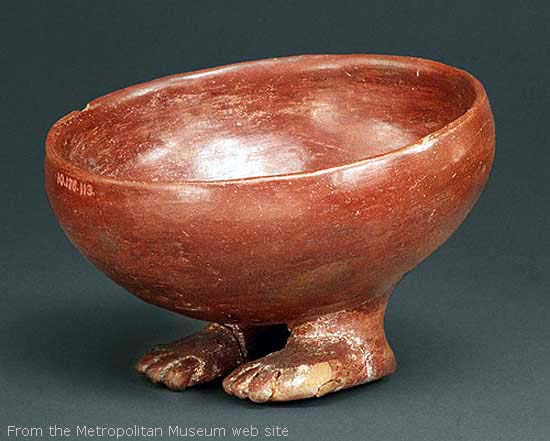|

Bowl with Human Feet,
c.3750–3550 BC, possibly late Naqada I or early Naqada II, Predynastic
period.
In the Predynastic period, potters created a wide variety of ceramic
vessels with bowls; one unusual type has supports shaped like human
feet. This example, made from Nile clay, is a simple round bowl tipped
slightly forward as if to offer its contents.
The two moulded and shaped pieces
representing human feet are solidly attached to the bowl's underside.
The vessel's surface was smoothed, slipped, and polished, giving it a
light sheen.
The bowl standing on feet is very
similar to the Egyptian hieroglyph meaning "to bring." Since none of the
known bowls comes from a well-understood context, archaeologists cannot
interpret their original use. Perhaps vessels like this were placed
above the tomb to present offerings from the living to the deceased, a
practice that was an established part of funerary ritual in pharaonic
Egypt. They may also have been placed in shrines holding offerings to a
deity.
| | 